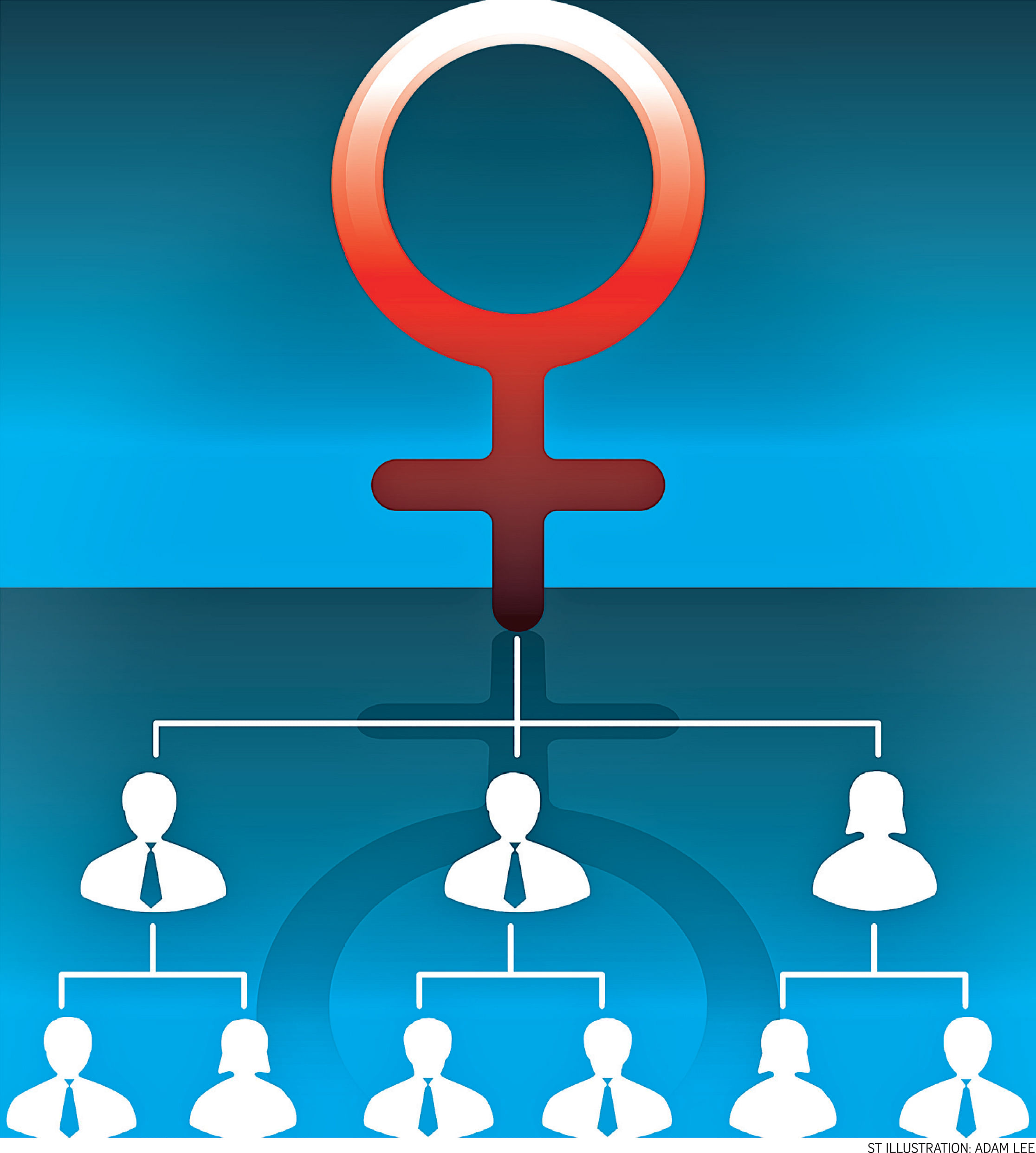In 2007 and 2008, I spent several months interviewing a slew of senior civil servants for a book on the history of the civil service.
I enjoyed the chance to engage with some of the top minds in our public sector. I came away with positive feelings, finding them clear-headed and engaged in their work, and most of all, impressed that most exuded that indefinable but perceptible air of public service.
Singapore was in good hands, I mused then, if its public sector leaders remain of such a high calibre. I continued to observe their careers with interest.
I wasn't surprised when a few of the very impressive men and women I interviewed went on to become permanent secretaries or adopted higher-profile posts. Indeed, having interviewed people such as Ms Lim Soo Hoon, Ms Yong Ying-I, Ms Chan Lai Fung and Mrs Ow Foong Pheng, I had harboured hopes that one day one of them might become Singapore's first female head of civil service (HCS).
Last week, the Public Service Division announced that the current HCS Peter Ong, 56, would retire. Mr Leo Yip will take over the top post.
Mr Yip is a former policeman who went on to head several ministries as permanent secretary, and had a tour of duty as Mr Lee Kuan Yew's principal private secretary. He is clearly eminently capable, with a track record and temperament that I am sure would make him a fine HCS.
Still, a little part of me was disappointed that Singapore will have to wait longer for a female HCS.

According to figures on the Ministry of Social and Family Development (MSF) website, as at 2016, there were 22 permanent secretaries in the civil service. Of these, six or 27.3 per cent were female.
Apart from the four women mentioned above, the other female permanent secretaries currently in service are Mrs Tan Ching Yee and Ms Yeoh Chee Yen, who I didn't get a chance to interview for the book.
Ms Lim retired in April at the age of 58. Ms Yeoh is 56, the same age as the incumbent HCS, Mr Ong.The other women are aged 52 to 54 , which puts them in the same cohort as the successor, Mr Yip, who is 53.
With the last HCS serving about six years, it is unlikely that any of the current crop of female permanent secretaries can become the next HCS. If Singapore is to have a women HCS, it will have to wait.
Based on what I know of the meritocratic Administrative Service, gender would not automatically be a consideration either way when picking an HCS.
What are the criteria for choosing an HCS? And what is the process - who picks, and how? To find out, I e-mailed the Public Service Division.
All it would say in response is: "The Head of Civil Service is typically appointed from among the Permanent Secretaries as the person best able to provide leadership to the Committee of Permanent Secretaries and the Public Service."
The process and criteria for choosing an HCS remain opaque. But at least we have the consolation of knowing that whatever system is in place has been effective, as Singapore has had steady, often visionary, heads of civil service.
Mr Lim Siong Guan (1999 to 2005) was both a visionary and an excellent implementer - his Public Service 21 drive raised public service standards across the board; personally, I think a dose of that discipline is needed again today, when some public agencies take months to respond to an e-mail request.
Mr Peter Ho (2005 to 2010) introduced the lexicon and instincts of adapting to risk and resilience. Mr Peter Ong (2010 to 2017) is credited with leading the move towards a digital civil service.
So if the current system works, does it matter whether Singapore has a female HCS one day?
I think it does, in sending a signal to the around 84,000 civil service officers in Singapore that there is no glass ceiling for women.
In Singapore as in many other countries, there is a gender performance gap. Women make up 56.2 per cent of the civil service, but only about 27 per cent of the permanent secretaries.
To be sure, women have made large gains in the public sector in recent years. I recall that in the 1990s, young female civil servants looked up to Ms Lim Hsiu Mei, the highest-ranking female officer, as deputy secretary. Then, in 1999, Ms Lim Soo Hoon smashed the glass ceiling, becoming the first woman permanent secretary.
The Speaker of Parliament Halimah Yacob and head of Singapore investment company Temasek Holdings Ho Ching are both female.
What would it take for a woman to head the civil service in the near future? For one, there must be a steady pipeline of good female leaders. Of the 38 deputy secretaries in 2016, 11 or 29 per cent are female. This is the rank below permanent secretary. It is not inconceivable that some will become permanent secretaries, and one of them could become the next HCS.
But it all depends of course on how an HCS is picked.
Who decides? A committee of other permanent secretaries? The predecessor? The Prime Minister, the minister in charge of the civil service and a few other senior Cabinet ministers? The Public Service Commission? A combination of all of the above?
My guess is that the inputs of the current crop of top ministers -who must work with the HCS on cross-ministry issues - will be very important.
Again, using 2016 figures available on the MSF website, there was only one female minister, Ms Grace Fu, in that crop of 20 Cabinet ministers, or 5 per cent. In May this year, Mrs Josephine Teo was promoted to full minister. The two women form 9 per cent in the 22-member Cabinet.
If there are two permanent secretaries, each equally capable with the requisite intelligence quotient, emotional quotient and resilience quotient, is it possible that a Cabinet dominated by men prefers the male candidate?
We are talking about instincts and habits that might be deeply entrenched.
In the United Kingdom, the first female head of the Home Office, Dame Helen Ghosh, unleashed a torrent of angry reactions when she said in 2012 that women were being excluded from the very top of government by a "clique" of Mr David Cameron's Old Etonian and Oxford friends.
I've seen how one old-school boss surrounded himself with an all-male team in the 1990s. When he stepped down, his male successor promoted several women to head departments. They weren't new hires. They had always been there, doing good work.
The difference is that this new boss was clearly more comfortable with women working as peers. Overnight, the proportion of women in senior positions went from zero to about half.
I'm not saying the current Cabinet is not comfortable with women as peers. I'm merely pointing to the impact that a powerful male-dominated inner core of leaders can have on gender representation down the line.
What does it all matter?
Well, the logic works like this.
In the corporate world, some studies have shown that having women on corporate boards is good for company performance.
A study of Fortune 500 companies in the United States by research firm Catalyst looked at the financial performance of companies and the proportion of women they had on their boards.
It found that companies with the highest percentages of women board directors outperformed those with the least across three financial indicators: return of equity was up at least 53 per cent; return on sales up at least 42 per cent, and return on invested capital was up at least 66 per cent.
To be sure, correlation is not causality, so we don't know if having more women on the board was the reason for that better performance, or some other factor. At the very least though, it would suggest that having more women in leadership positions is creating a positive dynamic that is felt across the organisation.
So how do you make sure you have boards that have enough women in the first place?
It turns out that having a female CEO and female chairman on the board doubles the number of board members who are female.
If the same holds true in the public sector, then it would suggest that having a female HCS would increase the proportion of women permanent secretaries. This would in turn raise gender diversity in the management ranks across the board.
And if the research on superior performance of companies with gender-diverse boards holds true, then a civil service with more gender-diverse management ranks would perform better.
Of course, some of the arguments above are speculative. I am also not in favour of picking a female candidate just for gender diversity. Whether it's a head of civil service, a CEO, a board chairman or any other leadership post, recruiters should pick the best person. I hope the best person to head the civil service next will be a woman.
Why? It boils down to a simple aspiration. I would love to see a woman head of civil service for the same reason I'd love to see a woman president of Singapore, so little girls can look at her and think: "That's what I want to be when I grow up."

